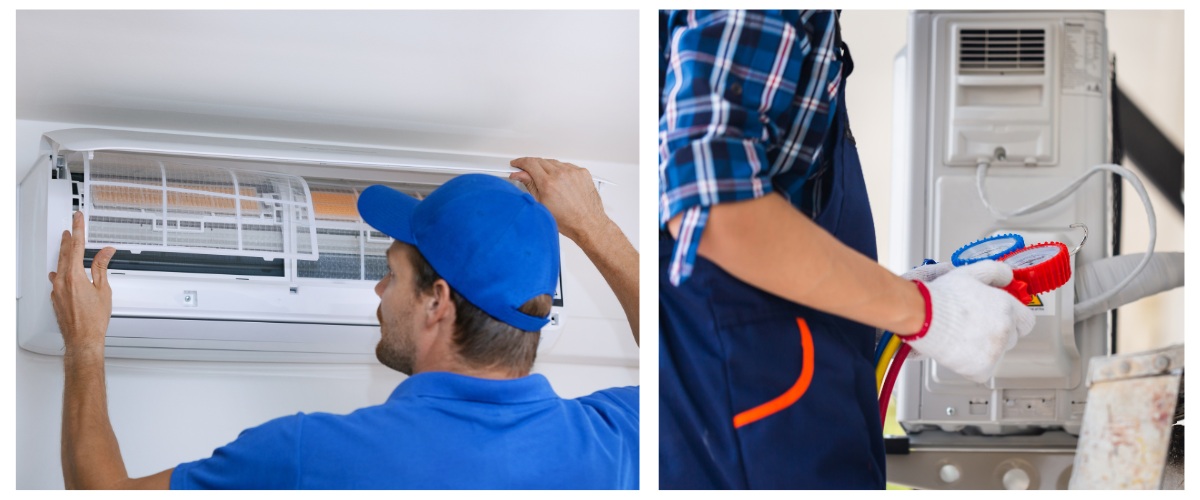Are you curious about how your HVAC system keeps your home or office comfortable throughout the year? In this comprehensive guide by TOP AC Inc, you’ll gain a deep understanding of the working principles behind your HVAC system. Whether it’s the refrigeration cycle, air distribution, or energy efficiency, we’ve got you covered.
Key Takeaways:
- Understanding the basics: The HVAC system works by controlling the temperature, humidity, and air quality in a space through a combination of heating, ventilation, and air conditioning components.
- Importance of maintenance: Regular maintenance of HVAC systems is crucial to ensure efficient operation and prolong its lifespan, ultimately saving on energy costs and minimizing the risk of breakdowns.
- Integration of smart technology: Modern HVAC systems are increasingly incorporating smart technology, allowing for remote monitoring and control, improved energy efficiency, and optimized performance.
HVAC System’s Basic Components
While understanding the intricacies of an HVAC system, it’s essential to familiarize yourself with its basic components. These components work together to provide you with a comfortable indoor environment. In this chapter, we’ll delve into the major parts of an HVAC system and the roles they play in ensuring efficient operation and optimal comfort for your home or workplace.
Major Parts of an HVAC System

An HVAC system is a complex network of components working harmoniously to create a comfortable indoor environment. One of the fundamental aspects of understanding HVAC systems is recognizing their significant parts. At the heart of the system lies the heating component, a furnace, heat pump, or radiant heating system, responsible for warming the indoor space during colder periods. Ventilation is crucial, involving fans, ductwork, and air filters to ensure a continuous fresh air flow. The air conditioning component, comprising compressors, evaporators, and refrigerants, takes center stage in cooling indoor spaces during warmer months.
Additionally, thermostats, sensors, and control systems act as the brains of the operation, regulating and maintaining the desired temperature. Ductwork, often unseen but integral, distributes conditioned air throughout the building. Each of these significant parts contributes to the efficiency and overall performance of the HVAC system, creating a seamless blend of heating, ventilation, and cooling for optimal indoor comfort.
The Role of Each Component
Each component of an HVAC system has a specific role to play in ensuring the overall functionality and performance of the system. The heating and cooling equipment, for instance, are responsible for maintaining the desired temperature, while the ductwork acts as the conduit for distributing conditioned air throughout your space. Thermostats, on the other hand, enable you to control the settings and regulate the temperature according to your preferences. Understanding the role of each component is crucial in ensuring the effective operation of your HVAC system.
HVAC System Working Principle
The HVAC (Heating, Ventilation, and Air Conditioning) system is the unsung hero of indoor comfort, orchestrating a symphony of processes to maintain the perfect ambiance in our living spaces. Understanding the intricate working principles of HVAC systems is critical to appreciating their role in keeping us warm in the winter, cool in the summer, and breathing fresh air year-round. The basic working principle involves:
- Heating (H): During colder periods, the HVAC system uses a heating source, such as a furnace or heat pump, to raise the temperature inside the building.
- Ventilation (V): Ventilation ensures the circulation of fresh outdoor air and the removal of indoor air pollutants. This is achieved through the exchange of air using fans or mechanical systems.
- Air Conditioning (AC): In warmer conditions, the HVAC system uses air conditioning units to cool the indoor air. This is often done through the circulation of refrigerants that absorb heat from the indoor air and release it outside.
- Thermostat Control: A central thermostat monitors and regulates the temperature inside the building. It signals the HVAC system to adjust heating or cooling to maintain the desired temperature.
- Ductwork: Ducts are used to distribute the conditioned air throughout the building. These ducts carry warm or cool air to different rooms and return the air to the HVAC system for reconditioning.
Overall, the HVAC system ensures a comfortable and healthy indoor environment by regulating temperature, humidity, and air quality.
Troubleshooting HVAC Systems with Solid Understanding of Its Principles
When you have a solid understanding of the principles of your HVAC system, troubleshooting becomes a much easier task. With a clear knowledge of how the system should be functioning, you can identify and address any issues that may arise more effectively. Whether it’s a problem with the air conditioning, heating, or ventilation, a strong grasp of HVAC principles will help you pinpoint the root cause of the issue and take the necessary steps to resolve it.

Energy Saving Tips in Handling HVAC Systems
When it comes to handling your HVAC system, there are several energy-saving tips that you can implement to reduce your energy consumption and lower your utility bills. By properly maintaining your system, using a programmable thermostat, sealing and insulating your ducts, and regularly changing your air filters, you can significantly improve the efficiency of your HVAC system.
- Regular maintenance of your HVAC system is crucial for its efficiency and longevity.
- Using a programmable thermostat can help you save energy and money by adjusting the temperature according to your schedule.
- Sealing and insulating your ducts can prevent air leaks, improving the overall efficiency of your system.
- Regularly changing your air filters can improve air quality and enhance the performance of your HVAC system.
Recognizing the importance of these energy-saving practices can not only benefit your wallet but also contribute to a more sustainable and environmentally friendly approach to HVAC usage.
Mastering the Symphony of Comfort
In conclusion, the working principles of HVAC systems form a fascinating tapestry of technology and engineering. From the warmth of heating to the freshness of ventilation and the cool embrace of air conditioning, each element plays a crucial role. Armed with this knowledge, you can make informed decisions about your HVAC system, creating a harmonious and comfortable indoor environment.
Embark on this enlightening journey as we unravel the mysteries behind HVAC system working principles, bringing you one step closer to mastering the dynamics of indoor comfort.

